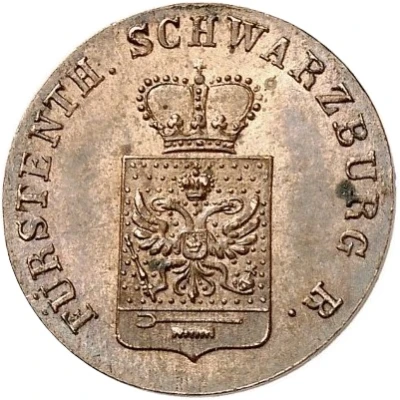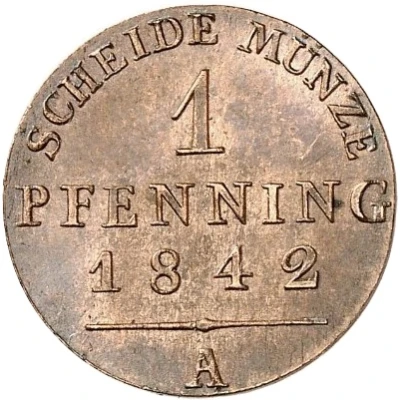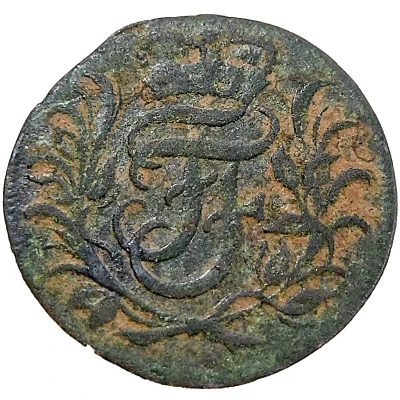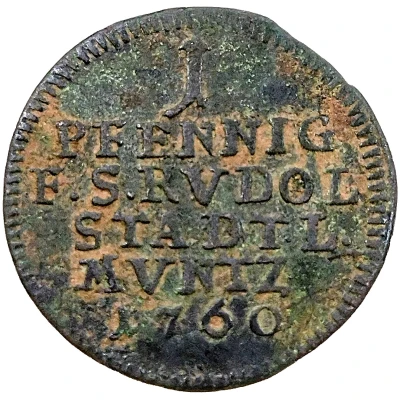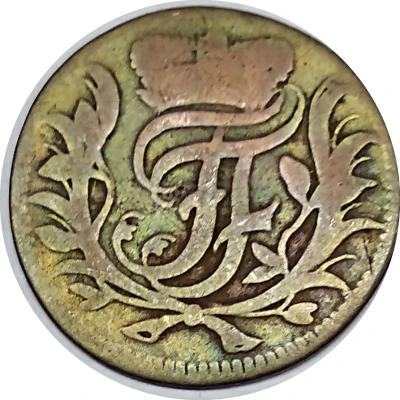
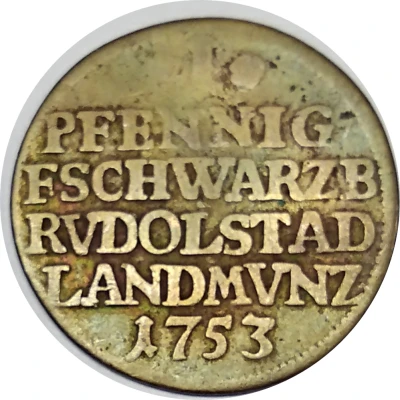

© ALAMIR
1 Pfennig - John Frederick
| Copper | 1.9 g | 19 mm |
| Issuer | Principality of Schwarzburg-Rudolstadt (Schwarzburg-Rudolstadt, German States) |
|---|---|
| Prince | John Frederick (Johann Friedrich) (1744-1767) |
| Type | Standard circulation coin |
| Years | 1752-1753 |
| Value | 1 Pfennig (1⁄288) |
| Currency | Thaler (1710-1868) |
| Composition | Copper |
| Weight | 1.9 g |
| Diameter | 19 mm |
| Shape | Round |
| Orientation | Medal alignment ↑↑ |
| Demonetized | Yes |
| Updated | 2024-10-05 |
| Numista | N#151977 |
|---|---|
| Rarity index | 87% |
Reverse
6-line inscription with denomination and date.
Script: Latin
Lettering:
1
Pfennig
F.Schwarzb
Rudolstadt
LandMunz
1753
Comment
The County of Schwarzburg was a state of the Holy Roman Empire from 1195 to 1595, when it was partitioned into Schwarzburg-Rudolstadt and Schwarzburg-Sondershausen. The new counties remained in the Holy Roman Empire until its dissolution. In 1710, the County of Schwarzburg-Rudolstadt was elevated to the Principality of Schwarzburg-Rudolstadt by Holy Roman Emperor Leopold I.The death of Karl Günther, Prince of Schwarzburg-Sondershausen in 1909 caused the Principalities of Schwarzburg-Rudolstadt and Schwarzburg-Sondershausen to be united under Günther Victor, Prince of Schwarzburg-Rudolstadt in a personal union. Following his succession in Sondershausen, Prince Günther Victor dropped the name Rudolstadt from his title and assumed the title Prince of Schwarzburg.
At the end of World War I, Prince Günther Victor was the last German prince to renounce his throne, abdicating on November 22, 1918. He made an agreement with the government that awarded him an annual pension and the right to use several of the family residences. The territory that encompassed the Principality of Schwarzburg-Rudolstadt is now located in the German state of Thuringia.
Interesting fact
The 1 Pfennig coin from the Principality of Schwarzburg-Rudolstadt was minted during the reign of John Frederick, who was the ruling prince of the principality from 1752 to 1753. The coin was made of copper and weighed 1.9 grams, which was a relatively small weight for a coin at that time. Despite its small size, the coin was an important part of the local economy and was used for everyday transactions in the principality. I hope you find this information helpful and interesting! If you have any further questions, please don't hesitate to ask.
